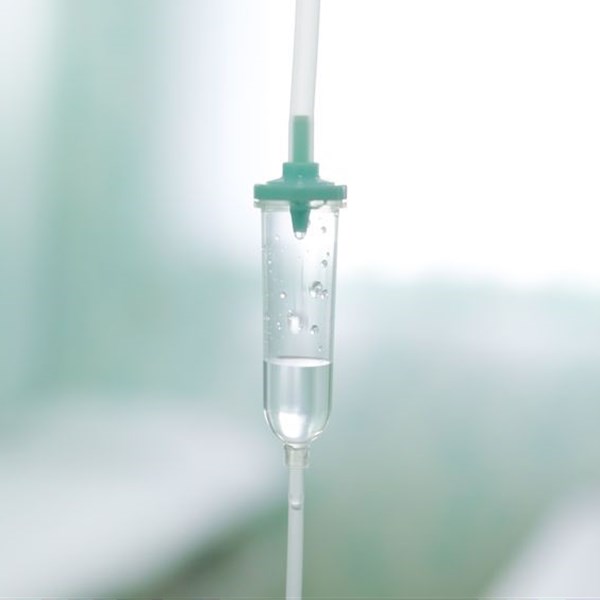At a press conference about South Africa’s National Health Insurance, the country’s health minister again said that private healthcare serves only 16% of the population. But his claim is misleading.
South Africa is regarded as an outlier in healthcare spend because it invests “huge amounts of money on few people”, the country’s health minister
said at a media conference in June.
Minister Aaron Motsoaledi was announcing the gazetting of South Africa’s National Health Insurance white paper. A slide in his presentation repeated a frequent claim that “the private sector… only provides care to 16% of the population”, with the country’s public sector taking care of the rest.
8.8 million medical aid members in 2015
Motsoaledi’s spokesman, Joe Maila, told Africa Check that “the 16% is the people on medical aid” and that the figure comes from the Council for Medical Schemes.
The 2015/2016 annual report of the Council for Medical Schemes notes that “only 16% of the South African population belong to medical schemes while the rest of the population depends on an overburdened government sector”.
The percentage calculation was based on a medical scheme membership number of 8.8 million in 2015, Dr Elsabé Conradie, the council’s general manager for stakeholder relations, told Africa Check. She said that “for the past few years, the percentage varied between 16% and 17%” of South Africa’s population.
(Note: Statistics South Africa’s 2016 General Household Survey estimated that 17.4% of the population had medical aid.)
‘Many people use combination of both sectors’
But the number of people with medical aid does not equal the number of people using the private healthcare sector.
“It’s not as simple as either public or private as many people use a combination of both sectors depending on their health needs,” Dr Jacqui Miot from the Health Economics and Epidemiology Research Office (HE²RO) at the University of the Witwatersrand told Africa Check.
In 2016, Statistics South Africa estimated that 1,515,000 households with no medical aid normally used the private healthcare sector and 706,000 households where at least one member had medical aid used the public health sector.
In total, 4,679,000 households’ normal place of consultation was the private sector.
“The only way to get an estimate of the normal place of consultation on an individual level would be to make the assumption that all members of the household would act the same way,” Stats SA’s service delivery statistics manager, Niël Roux, told Africa Check.
Under this assumption – that is influenced by the household member’s age, sex and particular illness or injury, of course – an estimated 13,393,357 South Africans (24.3% of the population) normally used private healthcare in 2016.
41.5% saw a private healthcare provider at last visit
Another calculation is from the National Income Dynamics Study, conducted in 2014 by the Southern Africa Labour and Development Research Unit at the University of Cape Town. It surveyed a nationally representative sample of more than 28,000 individuals in 7,300 households.
The study found that 41.5% of the respondents went to see someone in the private healthcare sector at their last visit.
However, two limitations need to be kept in mind, NIDS communications manager Kim Ingle told Africa Check.
First, children younger than 15 weren’t included and only people “who didn’t know when they last consulted someone about their health or said they consulted someone in the last 12 months” were asked who they had last visited, she said.
GPs & retail pharmacy services paid for out-of-pocket most
In a 2010 discussion paper on private sector funding of health services, health economist Di McIntyre proceeded from a calculation based on a nationally representative survey of 4,800 households.
Called the South African Consortium for Benefit Incidence Analysis (SACBIA), it was carried out in 2008 and entailed repeat visits to the households sampled.
This analysis put the share of people without medical scheme coverage who use private providers for outpatient care at 20%. Based on a medical scheme membership of 15% of the population, up to 32% of South Africans were estimated to have used outpatient services in the private sector.
Non-scheme members paying for care in the private sector were “largely restricted to general practitioners and retail pharmacy services but sometimes specialists as well”, McIntyre told Africa Check.
According to the discussion paper, those with medical scheme coverage mostly use private healthcare services.
“However, medical scheme members do sometimes use public hospitals, particularly for inpatient care and often at the most highly specialised hospitals,” McIntyre wrote.
Conclusion: The claim is misleading
South Africa’s health minister, Aaron Motsoaledi, claimed that “the private sector… only provides care to 16% of the population”. This was based on the number of people in South Africa who are on medical aid.
But depending on their health needs, many people use a combination of private and public healthcare services. Shares vary, depending on how the surveys are carried out and the question asked.
For instance, in 2016, an estimated 4.7 million households (28% of the total) reported to Stats SA that they normally go to someone in the private healthcare sector. When people older than 15 were asked in 2014 where their last visit had taken place in the year before, 41.5% indicated the private sector.
While it is true that the majority of South Africans do not benefit from private healthcare, it is misleading to equate medical scheme coverage – or the lack thereof – with the exclusive use of a particular healthcare sector.
This report was researched by Africa Check, a non-partisan fact-checking organisation. View the original piece on their website here.

